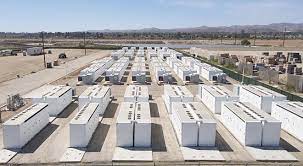Chile’s electricity and fuels watchdog SEC is seeking industry input for a planned update of technical design and execution instructions for distributed generation and energy storage installations.
Instructions encompass the areas of distribution network-connected wind, solar, hydropower and cogeneration installations, as well as battery storage systems. In terms of storage, they encompass battery storage systems connected to the distribution network – both injecting and non-injecting – and isolated systems.
Energy storage, particularly at utility-scale plants, is steadily gaining momentum in Chile.
In a notice, SEC referred to the 2022 energy storage and electromobility law, for which secondary legislation is pending.
Installed capacity of plants operating under Chile’s net billing framework stands at around 183MW, corresponding to 18,323 installations, according to May data from local solar power chamber Acesol. The largest chunk of installations, 29.4%, correspond to those with capacity of 200-300kW. The maximum single project size allowed under the rules is 300kW. Plants not part of the net billing regime can also inject, but the process is not as simple.
Acesol is pushing for regulations that help spur penetration of domestic and commercial-industrial solar thermal plants
The congress of Argentine province Mendoza approved a bill designed to help advance a 120MW multipurpose hydropower project.
Lawmakers greenlit the draft legislation, which declares the project, El Baqueano, to be of public need and authorizes the expropriation of land. The draft legislation also creates a bicameral committee to monitor the project’s progress.
Required outlay is US$525mn, a provincial government statement said, adding that an objective is getting the private sector to help foot the bill in exchange for a chunk of revenue from the sale of power. Officials have previously said the project would use funds owed to the province by the federal government following a legal challenge over exclusion from an industrial development regime.
The recently approved legislation authorizes the creation of a new firm controlled by provincial energy company Emesa, which would lead an eventual tendering process. Officials are authorized to directly contract provincial energy solutions firm Impsa to provide electromechancial components. The province had put an associated studies contract out to tender in 2021.
Planned for the Diamante River, El Baqueano is one of several hydroelectric plants mulled by Emesa.
The head of Uruguay’s state oil firm Ancap, Alejandro Stipanicic, said officials were mulling the creation of an investment fund targeting green hydrogen and offshore hydrocarbons projects.
Ancap has the right to obtain a stake of up to 30% in projects that are in the operational phase, local paper El Observador reported.
Given that Ancap’s financial clout is limited, officials are considering building a fund with cash from banks, pension savings and the private sector, it added.
Not participating in operations that “have minimal risk” could constitute losing a “huge opportunity,” Stipanicic was quoted as saying.
Uruguay is working to develop onshore and offshore green hydrogen projects.
In the oil and gas arena, four companies are eyeing Uruguay’s offshore hydrocarbons potential. Combined they have now placed bids for all seven blocks offered under the country’s open round, held twice a year.
Offshore exploration in Uruguay gathered pace in 2016 with the drilling, by Total, of the first well in around 40 years. Oil and gas shows have been reported, but no commercial discovery made.
Argentine miner Minera Andina del Sol (MAS) is seeking access to transport capacity on the Lama international transmission line, part of a power link between the country and Chile.
MAS is a 50:50 JV formed by Canada’s Barrick Gold and China’s Shangdong Gold to operate the Veladero gold mine in San Juan province, part of the US$1.2bn Lama gold project.
The objective of the request is providing Veladero – deep in the Andes – with electricity from Chile, a resolution published in Argentina’s official gazette said.
Supply to Veladero would be routed via power facilities belonging to Barrick unit Barrick Exploraciones Argentina, which would act as an additional provider of technical transport functions.
The request was filed on behalf of MAS by Barrick Gold unit Linecorp, which was granted a concession this month to operate the infrastructure, which does not link to the Argentine grid.
The 14km, US$54mn Lama line connects Barrick facilities to a border node. Barrick said in December that the line, designed to transport power from Chile, would help slash emissions and had been energized.
The only transmission infrastructure connecting the Chilean and Argentine grids is the 271km, 345kV Andes-Cobos line, belonging to AES Andes subsidiary InterAndes.

